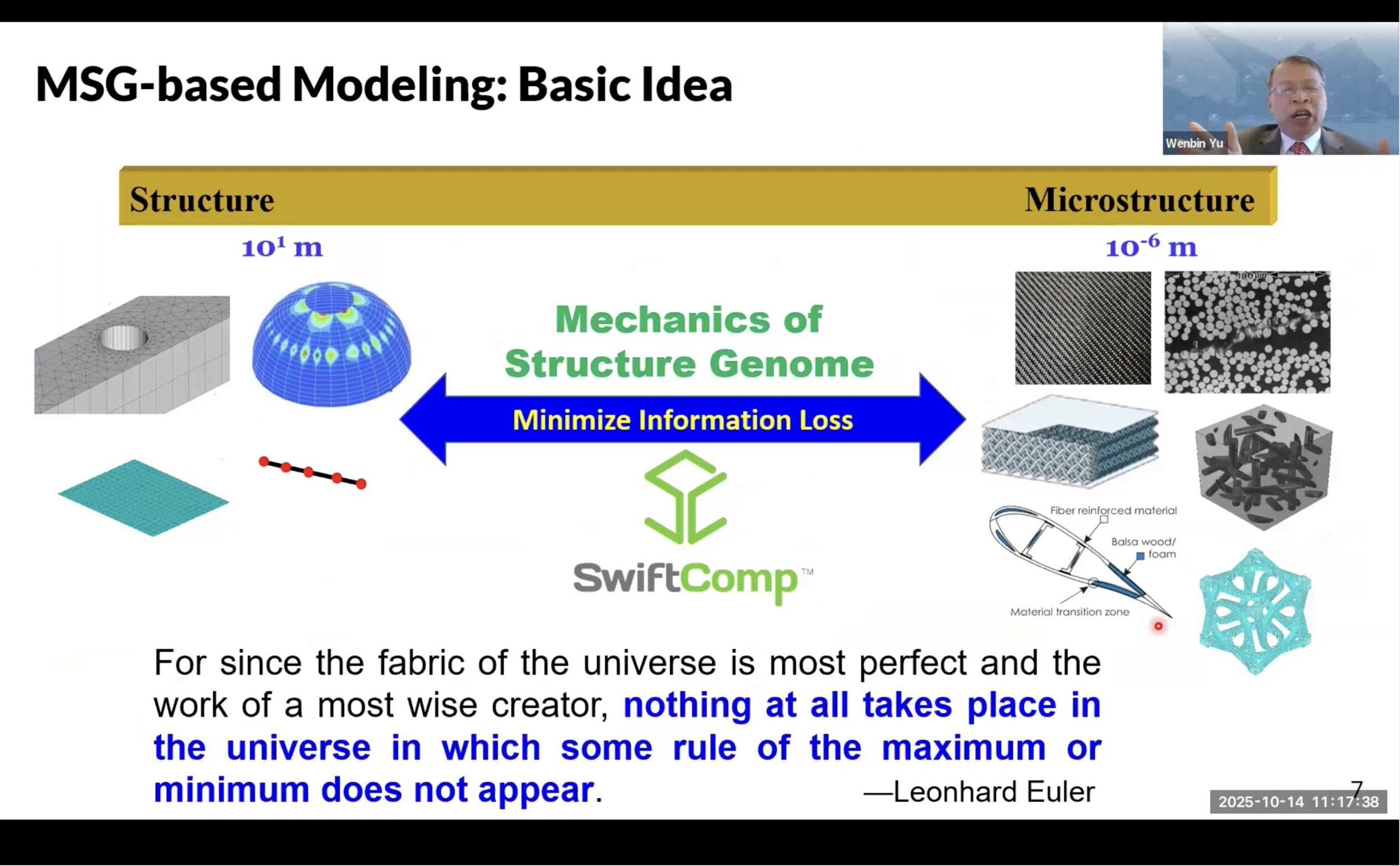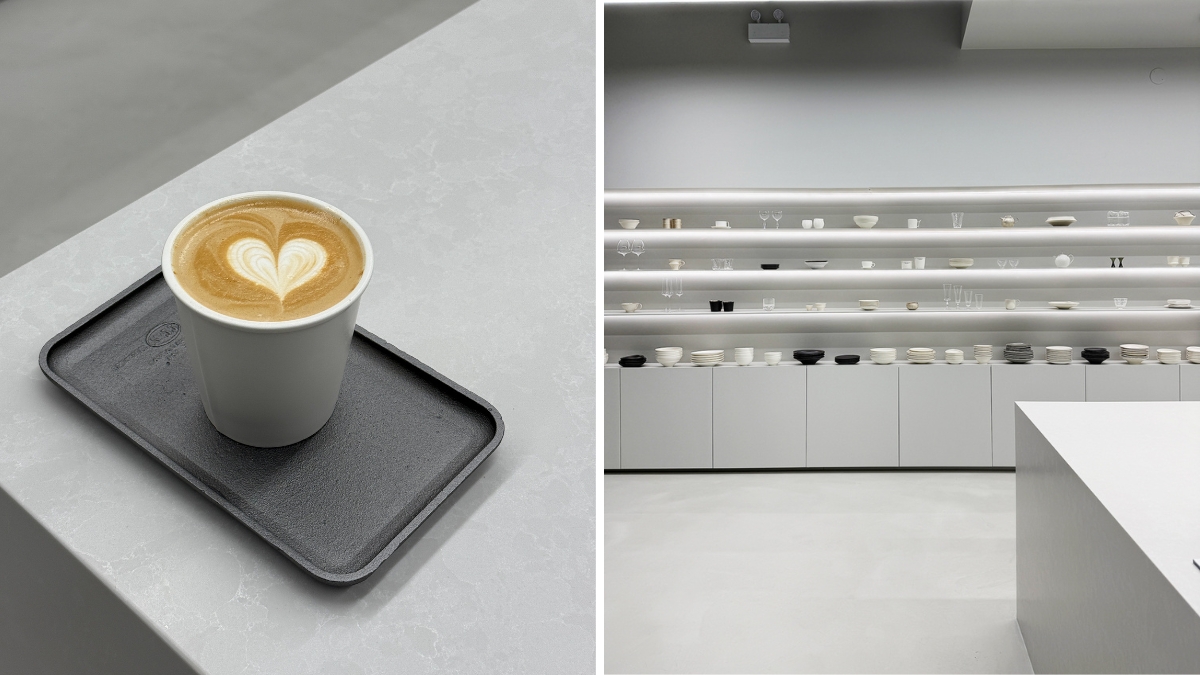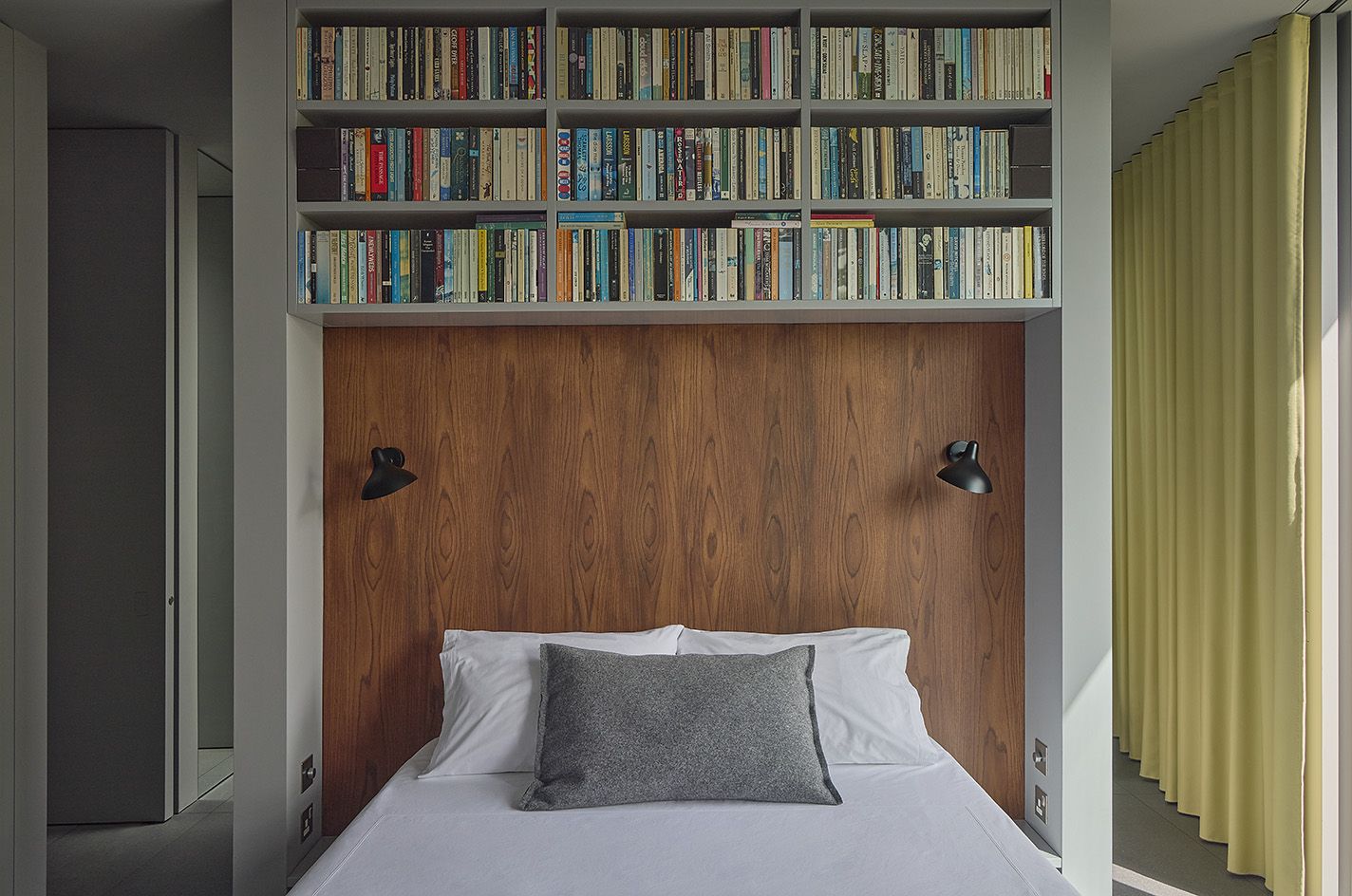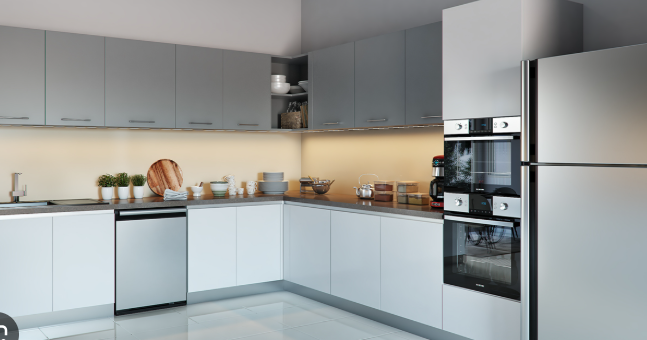Additively manufactured metallic TPMS lattice structures: design strategies, fabrication, multifunctional properties, and applications
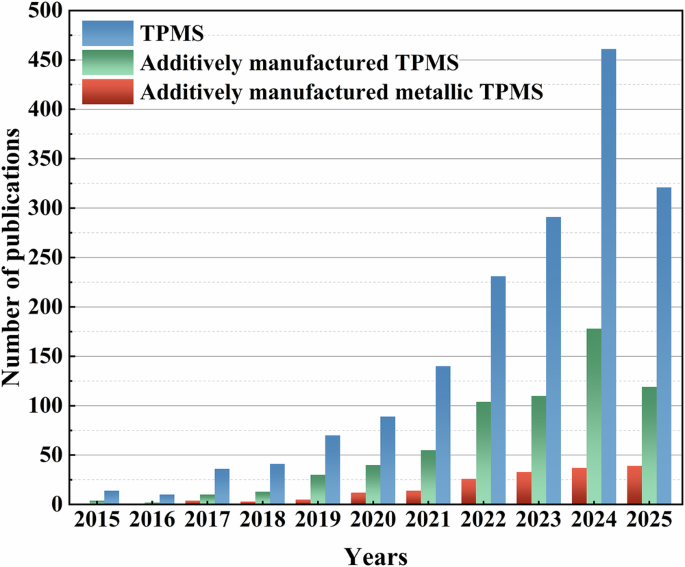
Lu, K. The future of metals. Science 328, 319–320 (2010).
Google Scholar
Chen, L.-Y., Liang, S.-X., Liu, Y. & Zhang, L.-C. Additive manufacturing of metallic lattice structures: unconstrained design, accurate fabrication, fascinated performances, and challenges. Mater. Sci. Eng. R Rep. 146, 100648 (2021).
Google Scholar
Yeo, S. J., Oh, M. J. & Yoo, P. J. Structurally controlled cellular architectures for high-performance ultra-lightweight materials. Adv. Mater. 31, 1803670 (2019).
Google Scholar
Yang, Y. et al. Recent progress in biomimetic additive manufacturing technology: from materials to functional structures. Adv. Mater 30, 1706539 (2018).
Google Scholar
Dercz, G. et al. Synthesis of porous Ti–50Ta alloy by powder metallurgy. Mater. Charact. 142, 124–136 (2018).
Google Scholar
Crupi, V., Epasto, G. & Guglielmino, E. Comparison of aluminium sandwiches for lightweight ship structures: honeycomb vs. foam. Mar. Struct. 30, 74–96 (2013).
Google Scholar
Banhart, J. Manufacturing routes for metallic foams. JOM 52, 22–27 (2000).
Google Scholar
Cheung, K. C. & Gershenfeld, N. Reversibly assembled cellular composite materials. Science 341, 1219–1221 (2013).
Google Scholar
van Grunsven, W., Hernandez-Nava, E., Reilly, G. & Goodall, R. Fabrication and mechanical characterisation of titanium lattices with graded porosity. Metals 4, 401–409 (2014).
Google Scholar
Heinl, P., Müller, L., Körner, C., Singer, R. F. & Müller, F. A. Cellular Ti–6Al–4V structures with interconnected macro porosity for bone implants fabricated by selective electron beam melting. Acta Biomater. 4, 1536–1544 (2008).
Google Scholar
Ajdari, A., Nayeb-Hashemi, H. & Vaziri, A. Dynamic crushing and energy absorption of regular, irregular and functionally graded cellular structures. Int. J. Solids Struct. 48, 506–516 (2011).
Google Scholar
Cheah, C. M., Chua, C. K., Lee, C. W., Feng, C. & Totong, K. Rapid prototyping and tooling techniques: a review of applications for rapid investment casting. Int. J. Adv. Manuf. Technol. 25, 308–320 (2005).
Google Scholar
Singh, S. & Singh, R. Precision investment casting: a state of art review and future trends. Proc. Inst. Mech. Eng. B J. Eng.Manuf. 230, 2143–2164 (2016).
Google Scholar
Sharp, K., Mungalov, D. & Brown, J. Metallic cellular materials produced by 3D weaving. Procedia Mater. Sci. 4, 15–20 (2014).
Google Scholar
Khoda, B., Ahsan, A. M. M. N., Shovon, A. N. & Alam, A. I. 3D metal lattice structure manufacturing with continuous rods. Sci. Rep. 11, 434 (2021).
Google Scholar
Ariff, Z. M., Afolabi, L. O., Salmazo, L. O. & Rodriguez-Perez, M. A. Effectiveness of microwave processing approach and green blowing agents usage in foaming natural rubber. J. Mater. Res. Technol. 9, 9929–9940 (2020).
Google Scholar
Luukkonen, T. et al. Ag- or Cu-modified geopolymer filters for water treatment manufactured by 3D printing, direct foaming, or granulation. Sci. Rep. 10, 7233 (2020).
Google Scholar
Arifvianto, B. & Zhou, J. Fabrication of metallic biomedical scaffolds with the space holder method: a review. Materials 7, 3588–3622 (2014).
Google Scholar
Parvizi, S., Hashemi, S. M., Asgarinia, F., Nematollahi, M. & Elahinia, M. Effective parameters on the final properties of NiTi-based alloys manufactured by powder metallurgy methods: a review. Prog. Mater. Sci. 117, 100739 (2021).
Google Scholar
Queheillalt, D. T. & Wadley, H. N. G. Titanium alloy lattice truss structures. Mater. Design 30, 1966–1975 (2009).
Google Scholar
Schaedler, T. A. et al. Ultralight metallic microlattices. Science 334, 962–965 (2011).
Google Scholar
Zheng, X. et al. Ultralight, ultrastiff mechanical metamaterials. Science 344, 1373–1377 (2014).
Google Scholar
Jiang, S., Sun, F., Zhang, X. & Fan, H. Interlocking orthogrid: an efficient way to construct lightweight lattice-core sandwich composite structure. Compos. Struct. 176, 55–71 (2017).
Google Scholar
Liu, S. et al. Superelastic behavior of in-situ eutectic-reaction manufactured high strength 3D porous NiTi-Nb scaffold. Scripta Mater. 181, 121–126 (2020).
Google Scholar
Ablat, M. A. & Qattawi, A. Investigating the design and process parameters of folded perforated sheet metal. Int. J. Adv. Manuf. Technol. 102, 615–633 (2019).
Google Scholar
Wadley, H. N. G., Dharmasena, K. P., O’Masta, M. R. & Wetzel, J. J. Impact response of aluminum corrugated core sandwich panels. Int. J. Impact Eng. 62, 114–128 (2013).
Google Scholar
Wang, L. et al. Microstructure evolution and superelasticity of layer-like NiTiNb porous metal prepared by eutectic reaction. Acta Mater. 143, 214–226 (2018).
Google Scholar
Thompson, M. K. et al. Design for additive manufacturing: trends, opportunities, considerations, and constraints. CIRP Ann. 65, 737–760 (2016).
Google Scholar
Maconachie, T. et al. SLM lattice structures: Properties, performance, applications and challenges. Mater. Design 183, 108137 (2019).
Google Scholar
Mazur, M. et al. Deformation and failure behaviour of Ti-6Al-4V lattice structures manufactured by selective laser melting (SLM). Int. J. Adv. Manuf. Technol. (2015).
Yan, C., Hao, L., Hussein, A. & Raymont, D. Evaluations of cellular lattice structures manufactured using selective laser melting. Int. J. Mach. ToolsManuf.62, 32–38 (2012).
Google Scholar
Yan, C., Hao, L., Hussein, A. & Young, P. Ti–6Al–4V triply periodic minimal surface structures for bone implants fabricated via selective laser melting. J. Mech. Behav. Biomed. 51, 61–73 (2015).
Google Scholar
Yoo, D. New paradigms in internal architecture design and freeform fabrication of tissue engineering porous scaffolds. Med. Eng. Phys. 34, 762–776 (2012).
Google Scholar
Yoo, D.-J. Recent trends and challenges in computer-aided design of additive manufacturing-based biomimetic scaffolds and bioartificial organs. Int. J. Precis. Eng. Manuf 15, 2205–2217 (2014).
Google Scholar
Wang, Y. Periodic surface modeling for computer aided nano design. Comput. Aided Design 39, 179–189 (2007).
Google Scholar
Al-Ketan, O. & Abu Al-Rub, R. K. Multifunctional mechanical metamaterials based on triply periodic minimal surface lattices. Adv. Eng. Mater. 21, 1900524 (2019).
Google Scholar
Deng, Y. et al. Cubic membrane structure in amoeba (Chaos carolinensis) mitochondria determined by electron microscopic tomography. J. Struct. Biol. 127, 231–239 (1999).
Google Scholar
Gan, Z., Turner, M. D. & Gu, M. Biomimetic gyroid nanostructures exceeding their natural origins. Sci. Adv. 2, e1600084 (2016).
Google Scholar
Guo, X. et al. Bioinspired hierarchical diamond triply periodic minimal surface lattices with high energy absorption and damage tolerance. Addit. Manuf. 76, 103792 (2023).
Google Scholar
Han, L. & Che, S. An overview of materials with triply periodic minimal surfaces and related geometry: from biological structures to self-assembled systems. Adv. Mater. 30, 1705708 (2018).
Google Scholar
Fee, C. 3D-printed porous bed structures. Curr. Opin. Chem. Eng. 18, 10–15 (2017).
Google Scholar
Fisher, J. W., Miller, S. W., Bartolai, J., Simpson, T. W. & Yukish, M. A. Catalog of triply periodic minimal surfaces, equation-based lattice structures, and their homogenized property data. Data Brief 49, 109311 (2023).
Google Scholar
Sychov, M. M., Lebedev, L. A., Dyachenko, S. V. & Nefedova, L. A. Mechanical properties of energy-absorbing structures with triply periodic minimal surface topology. Acta Astronaut. 150, 81–84 (2018).
Google Scholar
Teng, F., Sun, Y., Guo, S., Gao, B. & Yu, G. Topological and mechanical properties of different lattice structures based on additive manufacturing. Micromachines 13, 1017 (2022).
Google Scholar
Montazerian, H., Davoodi, E., Asadi-Eydivand, M., Kadkhodapour, J. & Solati-Hashjin, M. Porous scaffold internal architecture design based on minimal surfaces: a compromise between permeability and elastic properties. Mater. Design 126, 98–114 (2017).
Google Scholar
Al-Ketan, O., Lee, D.-W., Rowshan, R. & Abu Al-Rub, R. K. Functionally graded and multi-morphology sheet TPMS lattices: design, manufacturing, and mechanical properties. J. Mech. Behav. Biomed. 102, 103520 (2020).
Google Scholar
Wang, S. et al. The design of Ti6Al4V primitive surface structure with symmetrical gradient of pore size in biomimetic bone scaffold. Mater. Design 193, 108830 (2020).
Google Scholar
Rho, J.-Y., Kuhn-Spearing, L. & Zioupos, P. Mechanical properties and the hierarchical structure of bone. Med. Eng. Phys. 20, 92–102 (1998).
Google Scholar
Majeed, M., Khan, H. M., Wheatley, G. & Situ, R. Influence of post-processing on additively manufactured lattice structures. J. Braz. Soc. Mech. Sci. 44, 389 (2022).
Maskery, I. et al. Effective design and simulation of surface-based lattice structures featuring volume fraction and cell type grading. Mater. Design 155, 220–232 (2018).
Google Scholar
Yoo, D.-J. & Kim, K.-H. An advanced multi-morphology porous scaffold design method using volumetric distance field and beta growth function. Int. J. Precis. Eng. Manuf. 16, 2021–2032 (2015).
Google Scholar
Vijayavenkataraman, S., Zhang, L., Zhang, S., Hsi Fuh, J. Y. & Lu, W. F. Triply Periodic Minimal Surfaces Sheet Scaffolds for Tissue Engineering Applications: An Optimization Approach toward Biomimetic Scaffold Design. Acs Appl Bio Mater 1, 259–269 (2018).
Google Scholar
Walker, J. M. et al. Design and mechanical characterization of solid and highly porous 3D printed poly(propylene fumarate) scaffolds. Prog Addit Manuf 2, 99–108 (2017).
Google Scholar
Yoo, D.-J. Computer-aided porous scaffold design for tissue engineering using triply periodic minimal surfaces. Int J Precis Eng Man 12, 61–71 (2011).
Google Scholar
Feng, J., Fu, J., Shang, C., Lin, Z. & Li, B. Porous scaffold design by solid T-splines and triply periodic minimal surfaces. Comput Method Appl M 336, 333–352 (2018).
Google Scholar
Hu, C. & Lin, H. Heterogeneous porous scaffold generation using trivariate B-spline solids and triply periodic minimal surfaces. Graph Models 115, 101105 (2021).
Google Scholar
Feng, J. et al. Efficient generation strategy for hierarchical porous scaffolds with freeform external geometries. Addit Manuf 31, 100943 (2020).
Wang, R. et al. Effect of topological characteristics on manufacturability and mechanical performance of multiscale graded structures fabricated by laser powder bed fusion. Journal of Materials Processing Technology 337, 118721 (2025).
Google Scholar
Panesar, A., Abdi, M., Hickman, D. & Ashcroft, I. Strategies for functionally graded lattice structures derived using topology optimisation for Additive Manufacturing. Addit Manuf 19, 81–94 (2018).
Li, D., Dai, N., Tang, Y., Dong, G. & Zhao, Y. F. Design and Optimization of Graded Cellular Structures With Triply Periodic Level Surface-Based Topological Shapes. Journal of Mechanical Design 141, 071402 (2019).
Google Scholar
Dowling, L., Kennedy, J., O’Shaughnessy, S. & Trimble, D. A review of critical repeatability and reproducibility issues in powder bed fusion. Mater Design 186, 108346 (2020).
Google Scholar
Han, C. et al. Recent Advances on High-Entropy Alloys for 3D Printing. Adv. Mater. 32, 1903855 (2020).
Google Scholar
Putra, N. E. et al. Extrusion-based 3D printed biodegradable porous iron. Acta Biomater 121, 741–756 (2021).
Google Scholar
Mishra, D. K. & Pandey, P. M. Effects of morphological characteristics on the mechanical behavior of 3D printed ordered pore topological Fe scaffold. Materials Science and Engineering: A 804, 140759 (2021).
Google Scholar
Penumakala, P. K., Santo, J. & Thomas, A. A critical review on the fused deposition modeling of thermoplastic polymer composites. Compos Part B-eng 201, 108336 (2020).
Google Scholar
Choi, W. J. et al. Rapid development of dual porous poly(lactic acid) foam using fused deposition modeling (FDM) 3D printing for medical scaffold application. Materials Science and Engineering: C 110, 110693 (2020).
Google Scholar
Shen, L. et al. Creating lithium-ion electrolytes with biomimetic ionic channels in metal–rhabsganic frameworks. Adv. Mater. 30, 1707476 (2018).
Google Scholar
Zhang, G., Guo, J., Chen, H. & Cao, Y. Organic mesh template-based laminated object manufacturing to fabricate ceramics with regular micron scaled pore structures. J. Eur. Ceramic Soc. 41, 2790–2795 (2021).
Google Scholar
Zhou, X. & Liu, C. Three-dimensional printing for catalytic applications: current status and perspectives. Adv. Funct. Mater. 27, 30 (2017).
Peng, X. et al. Integrating digital light processing with direct ink writing for hybrid 3D printing of functional structures and devices. Addit. Manuf. 40, 101911 (2021).
Google Scholar
Peng, E., Zhang, D. & Ding, J. Ceramic robocasting: recent achievements, potential, and future developments. Adv. Mater. 30, 1802404 (2018).
Google Scholar
Ziaee, M. & Crane, N. B. Binder jetting: a review of process, materials, and methods. Addit. Manuf. 28, 781–801 (2019).
Google Scholar
Lewis, J. A. Direct ink writing of 3D functional materials. Adv. Funct. Mater. 16, 2193–2204 (2006).
Google Scholar
Gibson, M. A. et al. 3D printing metals like thermoplastics: fused filament fabrication of metallic glasses. Mater. Today 21, 697–702 (2018).
Google Scholar
Chawake, N. On Joule heating during spark plasma sintering of metal powders. Scripta Mater. 93, 52–55 (2014).
Sukhotskiy, V. et al. Magnetohydrodynamic drop-on-demand liquid metal additive manufacturing: system overview and modelling. In Pro. 5th International Conference of Fluid Flow, Heat and Mass Transfer (2018).
Simonelli, M. et al. Towards digital metal additive manufacturing via high-temperature drop-on-demand jetting. Addit. Manuf. 30, 100930 (2019).
Google Scholar
Daalkhaijav, U., Yirmibesoglu, O. D., Walker, S. & Mengüç, Y. Rheological modification of liquid metal for additive manufacturing of stretchable electronics. Adv Mater. Technol. 3, 1700351 (2018).
Google Scholar
Sundaram, M. M., Kamaraj, A. B. & Kumar, V. S. Mask-less electrochemical additive nanufacturing: a feasibility sudy. J. Manuf. Sci. Eng. 137, 021006 (2015).
Google Scholar
Brant, A. & Sundaram, M. A novel electrochemical micro additive manufacturing method of overhanging metal parts without reliance on support structures. Procedia Manuf. 5, 928–943 (2016).
Google Scholar
Kamaraj, A. B. & Sundaram, M. A study on the effect of inter-electrode gap and pulse voltage on current density in electrochemical additive manufacturing. J. Appl. Electrochem. 48, 463–469 (2018).
Google Scholar
Prashar, G. & Vasudev, H. A comprehensive review on sustainable cold spray additive manufacturing: state of the art, challenges and future challenges. J. Clean. Prod. 310, 127606 (2021).
Google Scholar
Vanerio, D., Kondas, J., Guagliano, M. & Bagherifard, S. 3D modelling of the deposit profile in cold spray additive manufacturing. J. Manuf. Process. 67, 521–534 (2021).
Google Scholar
Marzbanrad, B., Toyserkani, E. & Jahed, H. Customization of residual stress induced in cold spray printing. J. Mater. Process. Technol. 289, 116928 (2021).
Google Scholar
Rokni, M. R., Nutt, S. R., Widener, C. A., Champagne, V. K. & Hrabe, R. H. Review of relationship between particle deformation, coating microstructure, and properties in high-pressure cold spray. J. Therm. Spray Technol. 26, 1308–1355 (2017).
Google Scholar
Liu, S., Stebner, A. P., Kappes, B. B. & Zhang, X. Machine learning for knowledge transfer across multiple metals additive manufacturing printers. Addit. Manuf. 39, 101877 (2021).
Google Scholar
Yao, L., Ramesh, A., Xiao, Z., Chen, Y. & Zhuang, Q. Multimetal research in powder bed fusion: a review. Materials 16, 4287 (2023).
Google Scholar
Harun, W. S. W. et al. A review of powdered additive manufacturing techniques for Ti-6al-4v biomedical applications. Powder Technol. 331, 74–97 (2018).
Google Scholar
Wang, X. J., Zhang, L. C., Fang, M. H. & Sercombe, T. B. The effect of atmosphere on the structure and properties of a selective laser melted Al–12Si alloy. Mater. Sci. Eng. A 597, 370–375 (2014).
Google Scholar
Zhang, L.-C. & Attar, H. Selective laser melting of titanium alloys and titanium matrix composites for biomedical applications: a review. Adv. Eng. Mater. 18, 463–475 (2016).
Google Scholar
Attar, H. et al. Selective laser melting of in situ titanium–titanium boride composites: processing, microstructure and mechanical properties. Acta Mater. 76, 13–22 (2014).
Google Scholar
Yang, C. et al. High strength bioinspired cellular metallic glasses with excellent energy absorption. Acta Mater. 285, 120688 (2025).
Google Scholar
Ding, J. et al. Imperfection-enabled strengthening of ultra-lightweight lattice materials. Adv. Sci. 11, 2402727 (2024).
Google Scholar
Amin Yavari, S. et al. Layer by layer coating for bio-functionalization of additively manufactured meta-biomaterials. Addit. Manuf. 32, 100991 (2020).
Google Scholar
Al-Ketan, O., Rowshan, R. & Abu Al-Rub, R. K. Topology-mechanical property relationship of 3D printed strut, skeletal, and sheet based periodic metallic cellular materials. Addit. Manuf. 19, 167–183 (2018).
Fan, X. et al. Design, mechanical properties and energy absorption capability of graded-thickness triply periodic minimal surface structures fabricated by selective laser melting. Int. J. Mech. Sci. 204, 106586 (2021).
Google Scholar
Ma, S. et al. Manufacturability, mechanical properties, mass-transport properties and biocompatibility of triply periodic minimal surface (TPMS) porous scaffolds fabricated by selective laser melting. Mater. Design 195, 109034 (2020).
Google Scholar
Zhang, X.-Y., Yan, X.-C., Fang, G. & Liu, M. Biomechanical influence of structural variation strategies on functionally graded scaffolds constructed with triply periodic minimal surface. Addit. Manuf. 32, 101015 (2020).
Google Scholar
Kelly, C. N. et al. Functional repair of critically sized femoral defects treated with bioinspired titanium gyroid-sheet scaffolds. J. Mech. Behav. Biomed.Mater. 116, 104380 (2021).
Google Scholar
Ramazani, H. & Kami, A. Metal FDM, a new extrusion-based additive manufacturing technology for manufacturing of metallic parts: a review. Prog. Addit. Manuf. 7, 609–626 (2022).
Google Scholar
Sadaf, M., Bragaglia, M. & Nanni, F. A simple route for additive manufacturing of 316L stainless steel via fused filament fabrication. J. Manuf. Process. 67, 141–150 (2021).
Google Scholar
Sadaf, M., Bragaglia, M., Slemenik Perše, L. & Nanni, F. Advancements in metal additive manufacturing: a comprehensive review of material extrusion with highly filled polymers. J. Manuf. Mater. Process. 8, 14 (2024).
Google Scholar
Wang, F., You, S., Jiang, D. & Ning, F. Study on sintering mechanism for extrusion-based additive manufacturing of stainless steel through molecular dynamics simulation. Addit. Manuf. 58, 102991 (2022).
Google Scholar
Rosnitschek, T. et al. Dimensional accuracy and mechanical characterization of inconel 625 components in atomic diffusion additive manufacturing. Appl. Mech. 5, 376–390 (2024).
Google Scholar
Mostafaei, A., Stevens, E. L., Ference, J. J., Schmidt, D. E. & Chmielus, M. Binder jetting of a complex-shaped metal partial denture framework. Addit. Manuf. 21, 63–68 (2018).
Xie, Y. et al. Mechanical responses of triply periodic minimal surface gyroid lattice structures fabricated by binder jetting additive manufacturing. J. Mater. Res. Technol. 35, 2803–2814 (2025).
Google Scholar
Zhao, K. et al. Review of the types, formation mechanisms, effects, and elimination methods of binder jetting 3D-printing defects. J. Mater. Res. Technol. 27, 5449–5469 (2023).
Google Scholar
Hernández-Nava, E. et al. The effect of defects on the mechanical response of Ti-6Al-4V cubic lattice structures fabricated by electron beam melting. Acta Mater. 108, 279–292 (2016).
Google Scholar
Sun, Q., Sun, J., Guo, K. & Liu, J. Investigation on mechanical properties and energy absorption capabilities of AlSi10Mg triply periodic minimal surface sheet structures fabricated via selective laser melting. J. Mater. Eng. Perform. 31, 9110–9121 (2022).
Google Scholar
Aboulkhair, N. T., Maskery, I., Tuck, C., Ashcroft, I. & Everitt, N. M. The microstructure and mechanical properties of selectively laser melted AlSi10Mg: the effect of a conventional T6-like heat treatment. Mater. Sci. Eng. A 667, 139–146 (2016).
Google Scholar
Maskery, I., Aboulkhair, N. T., Aremu, A. O., Tuck, C. J. & Ashcroft, I. A. Compressive failure modes and energy absorption in additively manufactured double gyroid lattices. Addit. Manuf. 16, 24–29 (2017).
Google Scholar
Al-Ketan, O., Rowshan, R., Palazotto, A. N. & Abu Al-Rub, R. K. On mechanical properties of cellular steel solids with shell-like periodic architectures fabricated by selective laser sintering. J. Eng. Mater. Technol. 141, 021009 (2019).
Google Scholar
Yan, C., Hao, L., Hussein, A., Wei, Q. & Shi, Y. Microstructural and surface modifications and hydroxyapatite coating of Ti-6Al-4V triply periodic minimal surface lattices fabricated by selective laser melting. Mater. Sci. Eng. C 75, 1515–1524 (2017).
Google Scholar
Ataee, A., Li, Y., Fraser, D., Song, G. & Wen, C. Anisotropic Ti-6Al-4V gyroid scaffolds manufactured by electron beam melting (EBM) for bone implant applications. Mater. Design 137, 345–354 (2018).
Google Scholar
Pyka, G. et al. Surface modification of Ti6Al4V open porous structures produced by additive manufacturing. Adv. Eng. Mater. 14, 363–370 (2012).
Google Scholar
Yang, L. et al. Compression–compression fatigue behaviour of gyroid-type triply periodic minimal surface porous structures fabricated by selective laser melting. Acta Mater. 181, 49–66 (2019).
Google Scholar
Tyagi, S. A. & Manjaiah, M. Fine porous stainless steel TPMS cellular structures: printability and post-processing evaluation. J. Inst. Eng. India Ser. D (2023).
Soro, N., Saintier, N., Attar, H. & Dargusch, M. S. Surface and morphological modification of selectively laser melted titanium lattices using a chemical post treatment. Surf. Coat. Technol. 393, 125794 (2020).
Google Scholar
Was, G. S. & Pelloux, R. M. The effect of shot peening on the fatigue behavior of alloy 7075-T6. Metall. Trans. A 10, 656–658 (1979).
Google Scholar
Soyama, H. Comparison between the improvements made to the fatigue strength of stainless steel by cavitation peening, water jet peening, shot peening and laser peening. J. Mater. Process. Technol. 269, 65–78 (2019).
Google Scholar
Prevéy, P. S. & Cammett, J. T. The influence of surface enhancement by low plasticity burnishing on the corrosion fatigue performance of AA7075-T6. Int. J. Fatigue 26, 975–982 (2004).
Google Scholar
Callens, S. J. P., Arns, C. H., Kuliesh, A. & Zadpoor, A. A. Decoupling minimal surface metamaterial properties through multi-material hyperbolic tilings. Adv. Funct. Mater. 31, 2101373 (2021).
Google Scholar
Ashby, M. F. The properties of foams and lattices. Phil. Trans. R. Soc. A. 364, 15–30 (2006).
Google Scholar
Yang, L. et al. Insights into unit cell size effect on mechanical responses and energy absorption capability of titanium graded porous structures manufactured by laser powder bed fusion. J. Mech. Behav. Biomed. 109, 103843 (2020).
Google Scholar
Ravichander, B. B., Jagdale, S. H., Jabed, A. & Kumar, G. Mechanical and corrosion behavior of sheet-based 316L TPMS structures. Int. J. Mech. Sci. 254, 108439 (2023).
Google Scholar
Speirs, M., Van Hooreweder, B., Van Humbeeck, J. & Kruth, J.-P. Fatigue behaviour of NiTi shape memory alloy scaffolds produced by SLM, a unit cell design comparison. J. Mech. Behav. Biomed. 70, 53–59 (2017).
Google Scholar
Kaur, I. & Singh, P. Flow and thermal transport characteristics of triply-periodic minimal surface (TPMS)-based gyroid and Schwarz-P cellular materials. Numer. Heat Transf. A 79, 553–569 (2021).
Google Scholar
Liu, C. et al. Research on comprehensive heat dissipation characteristics of AlSi7Mg TPMS heat sinks manufactured by laser powder bed fusion. Appl. Therm. Eng. 261, 124941 (2025).
Google Scholar
Qureshi, Z. A., Elnajjar, E., Al-Ketan, O., Al-Rub, R. A. & Al-Omari, S. B. Heat transfer performance of a finned metal foam-phase change material (FMF-PCM) system incorporating triply periodic minimal surfaces (TPMS). Int. J. Heat Mass. Tranf. 170, 121001 (2021).
Google Scholar
Al-Ketan, O. et al. Forced convection computational fluid dynamics analysis of architected and three-dimensional printable heat sinks based on triply periodic minimal surfaces. J. Therm. Sci. Eng. Appl. 13, 021010 (2021).
Google Scholar
Ma, S. et al. Mechanical behaviours and mass transport properties of bone-mimicking scaffolds consisted of gyroid structures manufactured using selective laser melting. J. Mech. Behav. Biomed. 93, 158–169 (2019).
Google Scholar
Yu, G. et al. The select of internal architecture for porous Ti alloy scaffold: a compromise between mechanical properties and permeability. Mater. Design 192, 108754 (2020).
Google Scholar
Li, Z., Chen, Z., Chen, X. & Zhao, R. Effect of unit configurations and parameters on the properties of Ti–6Al–4V unit-stacked scaffolds: a trade-off between mechanical and permeable performance. J. Mech. Behav. Biomed. Mater. 116, 104332 (2021).
Google Scholar
Asbai-Ghoudan, R., Ruiz De Galarreta, S. & Rodriguez-Florez, N. Analytical model for the prediction of permeability of triply periodic minimal surfaces. J. Mech. Behav. Biomed. 124, 104804 (2021).
Google Scholar
Ali, D. & Sen, S. Finite element analysis of mechanical behavior, permeability and fluid induced wall shear stress of high porosity scaffolds with gyroid and lattice-based architectures. J. Mech. Behav. Biomed. 75, 262–270 (2017).
Google Scholar
Ali, D., Ozalp, M., Blanquer, S. B. G. & Onel, S. Permeability and fluid flow-induced wall shear stress in bone scaffolds with TPMS and lattice architectures: A CFD analysis. Eur. J. Mech. B/Fluids 79, 376–385 (2020).
Google Scholar
Luo, J.-W. et al. Macroscopic transport properties of Gyroid structures based on pore-scale studies: permeability, diffusivity and thermal conductivity. Int. J. Heat Mass Tranf. 146, 118837 (2020).
Google Scholar
Pires, T. et al. Numerical-experimental analysis of the permeability-porosity relationship in triply periodic minimal surfaces scaffolds. J. Biomech. 117, 110263 (2021).
Google Scholar
De Oliveira, A. R., De Andrade Mendes Filho, A., Masoumi, M. & Del Conte, E. G. Compression and energy absorption of maraging steel primitive scaffolds produced by powder bed fusion. Int. J. Adv. Manuf. Technol. 116, 1271–1283 (2021).
Google Scholar
Yin, H., Zheng, X., Wen, G., Zhang, C. & Wu, Z. Design optimization of a novel bio-inspired 3D porous structure for crashworthiness. Compos. Struct. 255, 112897 (2021).
Google Scholar
Alkebsi, E. A. A., Ameddah, H., Outtas, T. & Almutawakel, A. Design of graded lattice structures in turbine blades using topology optimization. Int. J. Comput. Integ. Manuf.34, 370–384 (2021).
Google Scholar
Wang, Z., Zhang, Y., Li, G., Jin, G. & Bernard, A. Stiffness modulation for soft robot joint via lattice structure configuration design. Procedia CIRP 100, 732–737 (2021).
Google Scholar
Attarzadeh, R., Rovira, M. & Duwig, C. Design analysis of the “Schwartz D” based heat exchanger: A numerical study. Int. J. Heat Mass Tranf. 177, 121415 (2021).
Google Scholar
Li, W., Yu, G. & Yu, Z. Bioinspired heat exchangers based on triply periodic minimal surfaces for supercritical CO2 cycles. Appl. Therm. Eng. 179, 115686 (2020).
Google Scholar
Li, L. et al. Early osteointegration evaluation of porous Ti6Al4V scaffolds designed based on triply periodic minimal surface models. J. Orthop. Transl. 19, 94–105 (2019).
Hsieh, M.-T., Begley, M. R. & Valdevit, L. Architected implant designs for long bones: advantages of minimal surface-based topologies. Mater. Design 207, 109838 (2021).
Google Scholar
Charbonnier, B. et al. Custom-made macroporous bioceramic implants based on triply-periodic minimal surfaces for bone defects in load-bearing sites. Acta Biomater. 109, 254–266 (2020).
Google Scholar
Alabort, E., Barba, D. & Reed, R. C. Design of metallic bone by additive manufacturing. Scripta Mater. 164, 110–114 (2019).
Google Scholar
Lei, H.-Y. et al. Feasibility of preparing additive manufactured porous stainless steel felts with mathematical micro pore structure as novel catalyst support for hydrogen production via methanol steam reforming. Int. J. Hydrog. Energy 44, 24782–24791 (2019).
Google Scholar
Baena-Moreno, F. M. et al. Stepping toward efficient microreactors for CO 2 methanation: 3D-printed Gyroid geometry. Acs Sustain, Chem, Eng, 9, 8198–8206 (2021).
Google Scholar
Sun, P. et al. 3D Interconnected Gyroid Au–CuS materials for efficient solar steam generation. ACS Appl. Mater. Interfaces 12, 34837–34847 (2020).
Google Scholar
Ataee, A., Li, Y., Brandt, M. & Wen, C. Ultrahigh-strength titanium gyroid scaffolds manufactured by selective laser melting (SLM) for bone implant applications. Acta Mater. 158, 354–368 (2018).
Google Scholar
Yan, C., Hao, L., Hussein, A. & Raymont, D. Evaluations of cellular lattice structures manufactured using selective laser melting. Int.J. Mach. Tools Manuf. 62, 32–38 (2012).
Soro, N., Attar, H., Wu, X. & Dargusch, M. S. Investigation of the structure and mechanical properties of additively manufactured Ti-6Al-4V biomedical scaffolds designed with a Schwartz primitive unit-cell. Mater. Sci. Eng. A 745, 195–202 (2019).
Google Scholar
Soro, N. et al. Evaluation of the mechanical compatibility of additively manufactured porous Ti–25Ta alloy for load-bearing implant applications. J. Mech. Behav. Biomed. 97, 149–158 (2019).
Google Scholar
Carluccio, D. et al. Additively manufactured iron-manganese for biodegradable porous load-bearing bone scaffold applications. Acta Biomater. 103, 346–360 (2020).
Google Scholar
Kadkhodapour, J. et al. Failure mechanisms of additively manufactured porous biomaterials: effects of porosity and type of unit cell. J. Mech. Behav. Biomed. 50, 180–191 (2015).
Google Scholar
Yánez, A., Fiorucci, M. P., Cuadrado, A., Martel, O. & Monopoli, D. Surface roughness effects on the fatigue behaviour of gyroid cellular structures obtained by additive manufacturing. Int. J. Fatigue 138, 105702 (2020).
Google Scholar
Kelly, C. N. et al. Fatigue behavior of As-built selective laser melted titanium scaffolds with sheet-based gyroid microarchitecture for bone tissue engineering. Acta Biomater. 94, 610–626 (2019).
Google Scholar
Bobbert, F. S. L. et al. Additively manufactured metallic porous biomaterials based on minimal surfaces: a unique combination of topological, mechanical, and mass transport properties. Acta Biomater. 53, 572–584 (2017).
Google Scholar
Hrabe, N. W., Heinl, P., Flinn, B., Körner, C. & Bordia, R. K. Compression-compression fatigue of selective electron beam melted cellular titanium (Ti-6Al-4V). J. Biomed. Mater. Res. B 99B, 313–320 (2011).
Google Scholar
Amin Yavari, S. et al. Relationship between unit cell type and porosity and the fatigue behavior of selective laser melted meta-biomaterials. J. Mech. Behav. Biomed. Mater. 43, 91–100 (2015).
Google Scholar
Ahmadi, S. M. et al. Fatigue performance of additively manufactured meta-biomaterials: The effects of topology and material type. Acta Biomater. 65, 292–304 (2018).
Google Scholar
Ahmadi, S. M. et al. From microstructural design to surface engineering: A tailored approach for improving fatigue life of additively manufactured meta-biomaterials. Acta Biomater. 83, 153–166 (2019).
Google Scholar
Ren, Y. et al. Compressive properties and fatigue performance of NiTi lattice structures optimized by TPMS. MSAM 3, 3380 (2024).
Google Scholar
Kotzem, D. et al. Ti6Al4V lattice structures manufactured by electron beam powder bed fusion – microstructural and mechanical characterization based on advanced in situ techniques. J. Mater. Res. Technol. 22, 2111–2130 (2023).
Google Scholar
Gandhi, R., Salmi, M., Roy, B., Paglari, L. & Concli, F. Mechanical performance, fatigue behaviour, and biointegration of additively manufactured architected lattices. Virtual Phys. Prototyp. 20, e2530733 (2025).
Google Scholar
Lefebvre, L. P., Baril, E. & Bureau, M. N. Effect of the oxygen content in solution on the static and cyclic deformation of titanium foams. J. Mater Sci. Mater. Med. 20, 2223–2233 (2009).
Google Scholar
link


